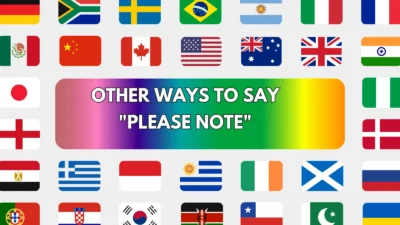The phrase “pros and cons” is commonly used to describe the advantages and disadvantages of a situation, option, or decision. It’s a simple, direct way to evaluate both sides — but repeating it too often in writing or speech can sound dull or overly basic.
To keep your communication more engaging and nuanced, here are 25 better or alternate ways to say “pros and cons”. These expressions allow you to match tone and formality while adding variety to your writing.
1. Advantages and Disadvantages
Meaning:
A straightforward phrase used to list positives and negatives.
Detailed Explanation:
This is the formal version of “pros and cons.” It’s clear, accurate, and widely used in academic or business writing.
Scenario Example:
Before we decide, let’s consider the advantages and disadvantages of outsourcing.
Best Use:
Reports, formal documents, presentations.
Tone:
Professional, neutral.
2. Strengths and Weaknesses
Meaning:
Points out what’s strong and what needs improvement.
Detailed Explanation:
Often used in evaluations or assessments, especially of people, products, or strategies.
Scenario Example:
We discussed the strengths and weaknesses of the marketing plan in today’s meeting.
Best Use:
Performance reviews, strategy discussions.
Tone:
Analytical, evaluative.
3. Upsides and Downsides
Meaning:
Refers to the benefits and drawbacks of something.
Detailed Explanation:
A conversational and slightly more informal version of “pros and cons.”
Scenario Example:
The upsides and downsides of remote work are being widely debated.
Best Use:
Blog posts, casual professional writing.
Tone:
Informal, accessible.
4. Benefits and Drawbacks
Meaning:
Highlights what is gained and what is compromised.
Detailed Explanation:
A balanced, formal alternative with a neutral and informative tone.
Scenario Example:
We must weigh the benefits and drawbacks of switching vendors.
Best Use:
Business writing, academic essays.
Tone:
Professional, neutral.
5. Positives and Negatives
Meaning:
General term for good and bad aspects.
Detailed Explanation:
Very broad, commonly used in everyday and semi-formal communication.
Scenario Example:
There are both positives and negatives to using AI in education.
Best Use:
News articles, general discussions.
Tone:
Balanced, straightforward.
6. For and Against
Meaning:
Used to describe arguments supporting or opposing an idea.
Detailed Explanation:
Common in debates and persuasive writing.
Scenario Example:
Let’s go over the points for and against raising tuition fees.
Best Use:
Debates, opinion pieces, discussions.
Tone:
Objective, argumentative.
7. Gains and Losses
Meaning:
Focuses on what is achieved versus what is sacrificed.
Detailed Explanation:
Often used in finance, investments, or risk assessment contexts.
Scenario Example:
We evaluated the gains and losses from last quarter’s strategy.
Best Use:
Financial reports, risk analysis.
Tone:
Technical, analytical.
8. Boons and Banes
Meaning:
Describes blessings (boons) and curses (banes) of something.
Detailed Explanation:
A literary or poetic way to refer to pros and cons.
Scenario Example:
Technology is both a boon and a bane in modern relationships.
Best Use:
Creative writing, formal speeches.
Tone:
Stylized, expressive.
9. Rewards and Risks
Meaning:
Focuses on potential benefits and dangers.
Detailed Explanation:
Used in decision-making scenarios where risk is a factor.
Scenario Example:
Every investment comes with its own set of rewards and risks.
Best Use:
Business strategy, entrepreneurship.
Tone:
Pragmatic, professional.
10. Assets and Liabilities
Meaning:
Refers to positives and negatives in financial or metaphorical contexts.
Detailed Explanation:
Popular in accounting but also metaphorically to describe strengths and weaknesses.
Scenario Example:
Each team member brings different assets and liabilities to the table.
Best Use:
Finance, HR, team evaluations.
Tone:
Formal, technical.
11. Opportunities and Challenges
Meaning:
Frames pros and cons in a constructive way.
Detailed Explanation:
More optimistic, it sees disadvantages as challenges rather than problems.
Scenario Example:
The expansion brings both opportunities and challenges for the company.
Best Use:
Strategic planning, leadership communication.
Tone:
Positive, motivational.
12. Good and Bad Sides
Meaning:
Describes the positive and negative aspects of something.
Detailed Explanation:
More informal and conversational, often used in opinion sharing.
Scenario Example:
There are good and bad sides to being your own boss.
Best Use:
Blogs, casual writing.
Tone:
Friendly, informal.
13. Prospective Benefits and Potential Pitfalls
Meaning:
Identifies future positives and possible negatives.
Detailed Explanation:
A thoughtful way to talk about anticipated outcomes.
Scenario Example:
We reviewed the prospective benefits and potential pitfalls of launching early.
Best Use:
Strategic proposals, evaluations.
Tone:
Analytical, forward-thinking.
14. Costs and Benefits
Meaning:
A common decision-making framework comparing losses and gains.
Detailed Explanation:
Used to evaluate economic or strategic choices.
Scenario Example:
Let’s conduct a cost-benefit analysis before we proceed.
Best Use:
Economics, business strategy.
Tone:
Practical, calculated.
15. What You Gain vs. What You Give Up
Meaning:
Compares the benefits and the sacrifices involved.
Detailed Explanation:
Used when evaluating whether something is worth it.
Scenario Example:
You have to think about what you gain vs. what you give up with a job change.
Best Use:
Decision-making, personal choices.
Tone:
Conversational, reflective.
16. Perks and Limitations
Meaning:
Highlights extra advantages versus restrictions.
Detailed Explanation:
Used to evaluate features or policies.
Scenario Example:
The software has great perks but also a few limitations.
Best Use:
Product reviews, team updates.
Tone:
Balanced, informal.
17. Silver Linings and Drawbacks
Meaning:
Shows positives and negatives, with a hopeful tone.
Detailed Explanation:
Often used to find good in an otherwise difficult situation.
Scenario Example:
Even with the delay, there were some silver linings and drawbacks to consider.
Best Use:
Personal stories, reflective writing.
Tone:
Hopeful, empathetic.
18. Highs and Lows
Meaning:
Describes emotional or experiential ups and downs.
Detailed Explanation:
Great for storytelling or evaluating experiences.
Scenario Example:
My trip had its highs and lows, but overall it was memorable.
Best Use:
Journals, blogs, vlogs.
Tone:
Casual, expressive.
19. Good Points and Bad Points
Meaning:
Basic way to break down positives and negatives.
Detailed Explanation:
Simple, clear, and commonly understood.
Scenario Example:
Let’s list the good points and bad points of moving to a new city.
Best Use:
Everyday conversations, simple explanations.
Tone:
Neutral, straightforward.
20. Wins and Warnings
Meaning:
Describes successes versus cautionary concerns.
Detailed Explanation:
Useful when reviewing performance or past decisions.
Scenario Example:
We’ll highlight the wins and warnings from this quarter’s campaign.
Best Use:
Marketing reviews, team retrospectives.
Tone:
Reflective, analytical.
21. Credits and Criticisms
Meaning:
Highlights praise versus complaints or problems.
Detailed Explanation:
Used in creative reviews, such as movies, performances, or strategies.
Scenario Example:
The product has earned both credits and criticisms since launch.
Best Use:
Reviews, discussions.
Tone:
Critical, thoughtful.
22. Pluses and Minuses
Meaning:
Simple tally of what’s positive and what’s not.
Detailed Explanation:
Informal and commonly used in personal decision-making.
Scenario Example:
Let’s weigh the pluses and minuses before buying that car.
Best Use:
Quick comparisons, casual speech.
Tone:
Neutral, casual.
23. Favors and Flaws
Meaning:
Highlights what’s good and what’s lacking.
Detailed Explanation:
Less common but effective in balanced reviews.
Scenario Example:
There are several favors and flaws in this policy we should discuss.
Best Use:
Critiques, informal analysis.
Tone:
Creative, fair.
24. Benefits and Limitations
Meaning:
Points out what something can and cannot do.
Detailed Explanation:
Ideal for product specs, tools, and research.
Scenario Example:
This solution has clear benefits and limitations we need to assess.
Best Use:
Research papers, software reviews.
Tone:
Precise, neutral.
25. Arguments on Both Sides
Meaning:
Indicates that each side has valid points.
Detailed Explanation:
Shows a fair evaluation of differing opinions.
Scenario Example:
There are strong arguments on both sides of the climate policy debate.
Best Use:
Debates, critical essays.
Tone:
Balanced, academic.
Conclusion
The phrase “pros and cons” is a classic — but switching it up can make your writing feel more dynamic, thoughtful, and professional. From “advantages and disadvantages” to “benefits and limitations,” these 25 alternatives give you more ways to express contrast and evaluate decisions effectively.




